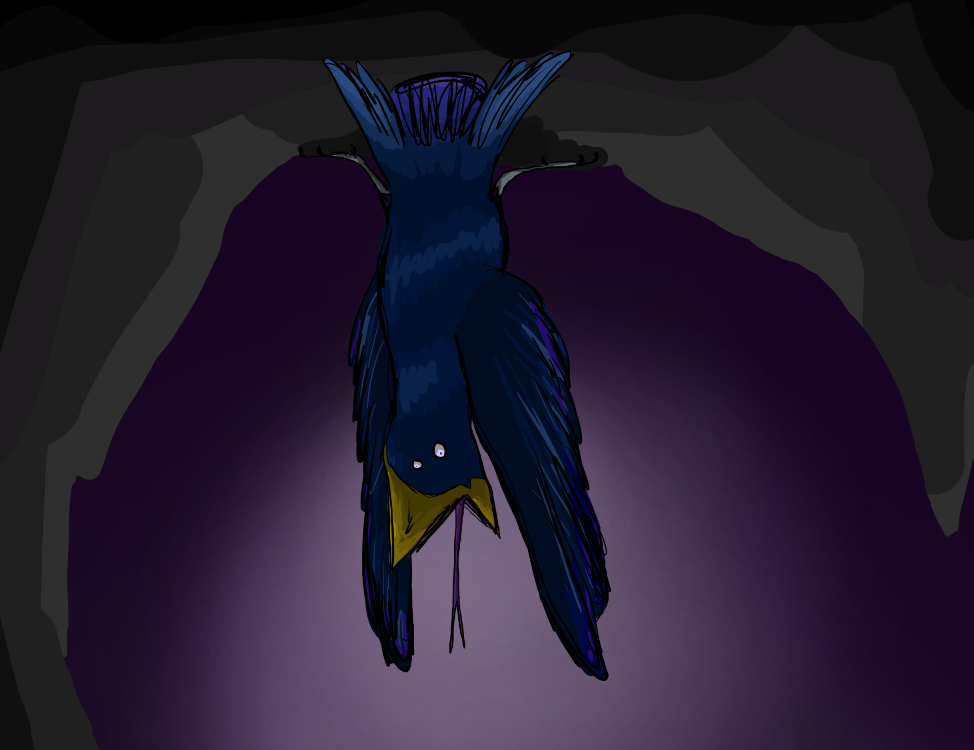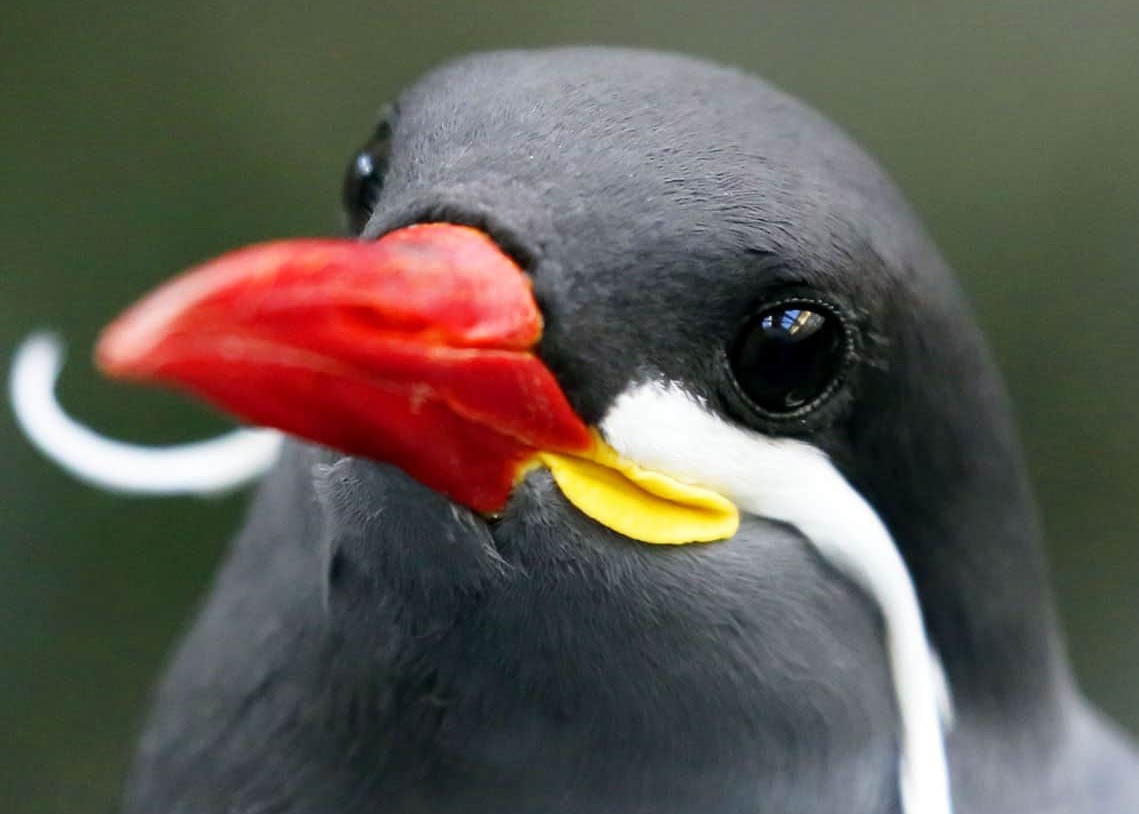Twattel
Small subterranean birds from Xiskin, twattels clog up smaller caverns and tunnels with their massive flocks. Twattels have made it to planet Maresa after infiltrating a number of spacecrafts, classified as an invasive species as they have damaged cave ecosystems.
Anatomy
As cave-dwellers, much of their anatomy has changed to suit their environment. Twattels have a shimmering dark blue plumage, with purple streaks on the tips of their tail feathers and wing feathers. Their heads are large, which massively stunts their ability to fly, relying more on climbing and gliding using their talons and claws on their wings. Twattels have a thick, solid beak, with a snaking purple tongue inside.
Both male and female twattels are identical, side from a slightly larger beak in females.
Diet
Twattels are a carnivorous species. They use echolocation to hunt for moving prey, typically small flying animals. They often run the risk of flying too fast when chasing prey and slamming their beaks into rock-faces, stuck so deep that they can never escape. On Xiskin, their main prey species are lily crickets. These insects grow to about six centimetres in length and gather round underground pools and streams in their hundreds.
Reproduction & Growth
These birds reproduce year-round, as their perception of seasons is skewed. Twattel mating is the time these birds are most vulnerable. As a blind species, these birds will awkwardly stumble to the ground floor together with their colony. They will violently flap about, mating with many other birds in one giant pile, and after a few minutes the birds will fly off.
Females lay between ten and twenty eggs, covered in a sticky yellow substance that hardens after about twenty seconds. Female twattels have twenty seconds to lay an egg, one by one, and glue it to a cave roof to protect them from predators.
Invasive Species
The first Maresan spacecrafts landed on Xiskin three hundred years ago, to explore the planet and claim it as the planet's property. One of those spacecrafts collected an unwelcome group of twattels that managed to fly aboard the spacecraft. A series of tremors awoke a colony of twattels that fled a cave system, and detected welcome darkness in the vehicle.
After going undetected in the spacecraft and safely landing on Maresa, the birds escaped and managed to locate a nearby cave, leading into a large system of caverns. In the three hundred years of their existence on Maresa, these birds have managed to dominate subterranean ecosystems on Maresa and kill off countless native species.












I'm kind of laughing at the description of their mating behaviour, just stumbling around blindly in the dark.
Explore Etrea | March of 31 Tales
between the name and how they reproduce, they're a very funny bird species xD